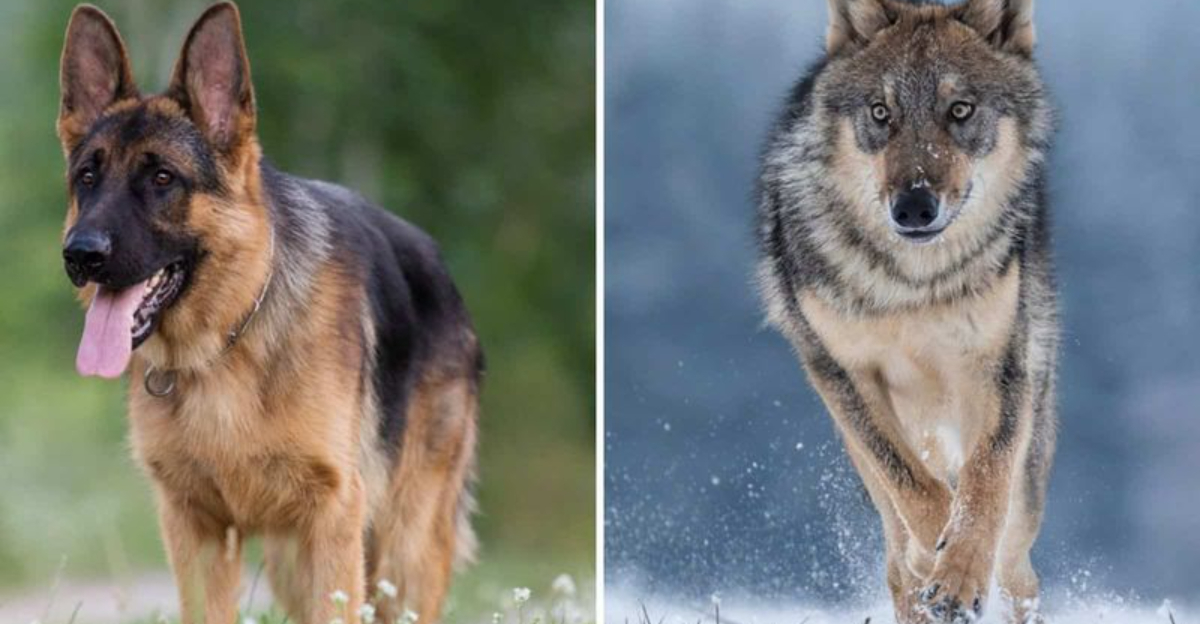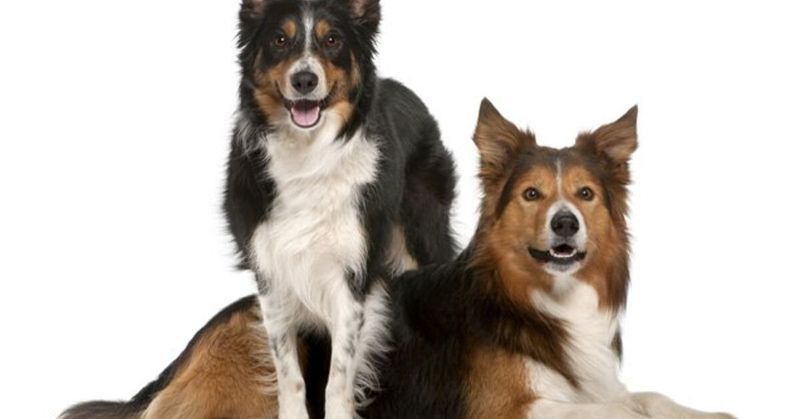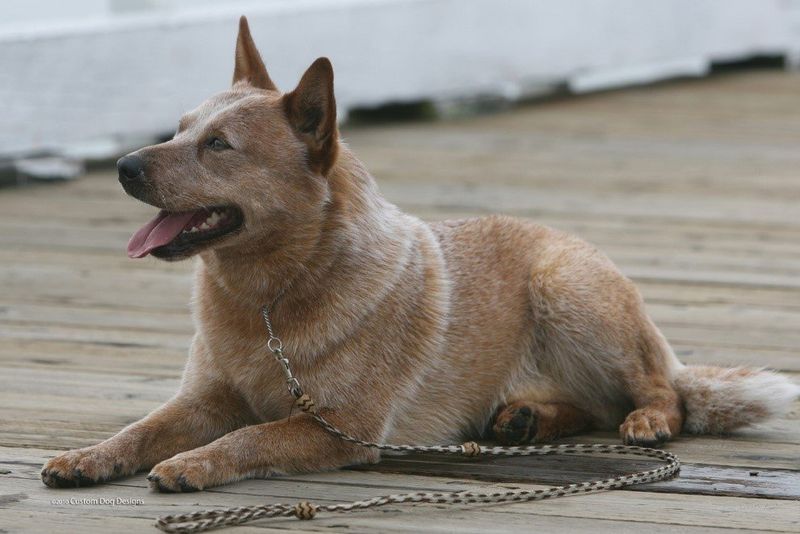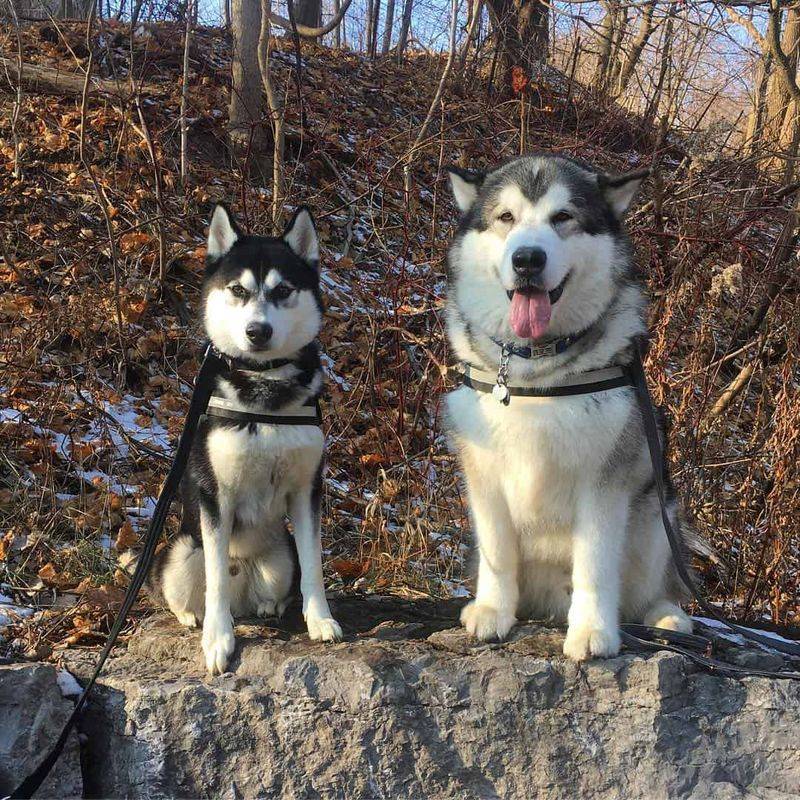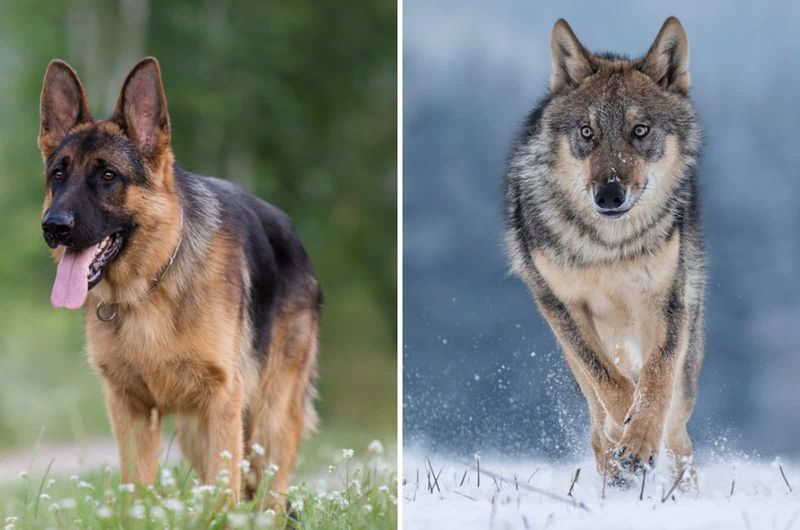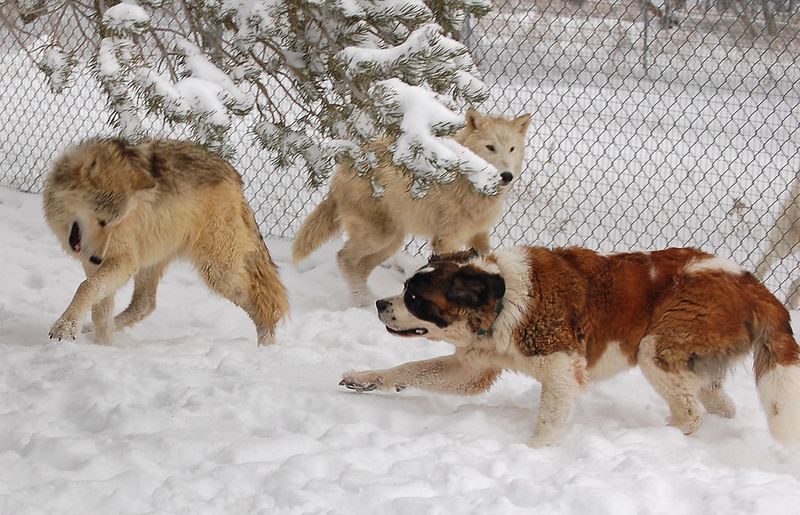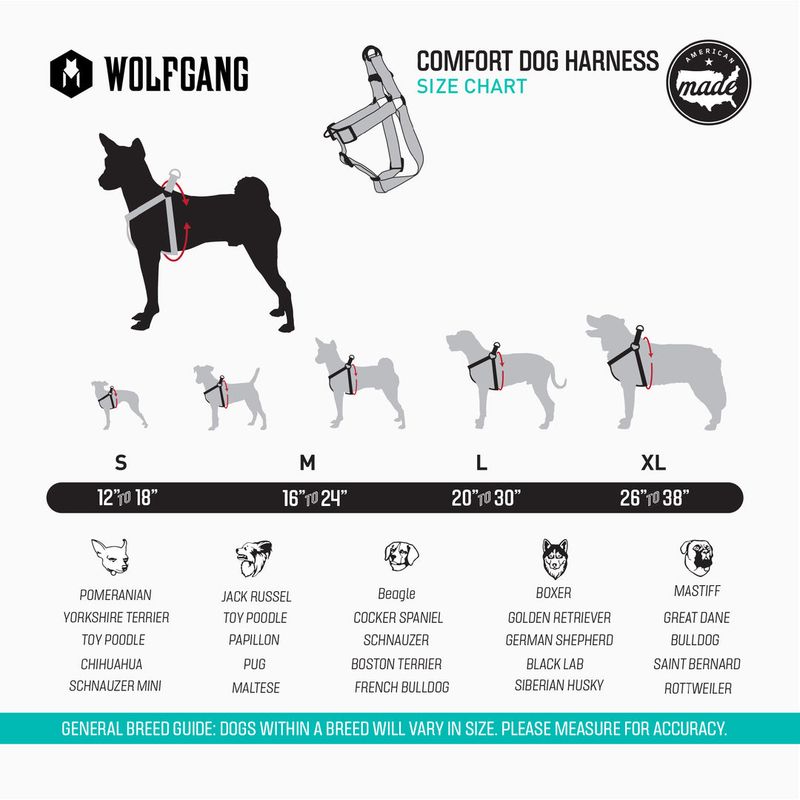Explore the intriguing world of wolves and domestic dogs as we delve into ten fascinating size comparisons. From the majestic presence of wolves to the variety of shapes and sizes found in domestic dogs, each comparison offers a unique perspective on evolution, adaptation, and survival. This journey through the animal kingdom will surprise and delight you with insights into how size truly matters in the wild and at home.
Arctic Wolf vs. Siberian Husky
In the icy realms of the Arctic, the Arctic wolf reigns supreme. With its thick white coat and size ranging up to 3 feet tall, it’s built for survival. The Siberian Husky, though smaller at about 21 to 23.5 inches, shares a similar husky build and thick fur. Picture them together in a snowy landscape, their breath visible in the frosty air. The Husky’s friendly demeanor contrasts with the Arctic wolf’s survival instincts. Both thrive in cold climates, yet one is wild, and the other is a beloved sled dog.
Red Wolf vs. Labrador Retriever
Red wolves are a rare and endangered species, standing around 26 inches tall. In contrast, the Labrador Retriever, one of the most popular pets, stands between 21.5 and 24.5 inches tall. The red wolf’s reddish-brown coat is distinct, while the Labrador’s coat varies widely. Imagine the red wolf in its wild habitat, moving with grace and purpose. The Labrador, friendly and eager, is a favorite among families. Despite their size proximity, the red wolf’s rarity and wild spirit set it apart from its domestic counterpart.
Ethiopian Wolf vs. Border Collie
The Ethiopian wolf, sleek and slender, is adapted to the highlands of Ethiopia. Standing at 24 inches, it is slightly taller than the agile Border Collie, which measures about 18 to 22 inches. Visualize them in a grassland, both moving with remarkable grace. The Border Collie’s intelligence and energy are legendary, making it an excellent herding dog. Meanwhile, the Ethiopian wolf, with its striking red coat, is a specialized predator. Their elegance is evident, yet one thrives in domestic settings, the other in the wild.
Dingo vs. Australian Cattle Dog
The dingo, Australia’s wild dog, stands around 23 to 26 inches tall, mirroring the Australian Cattle Dog’s height of 18 to 20 inches. Together in the outback, they display a rugged beauty. The dingo’s sandy coat blends seamlessly with the surroundings, while the Cattle Dog’s speckled coat is a splash of color. The dingo’s wild instincts are a stark contrast to the Cattle Dog’s herding skills. Both share a keen intelligence, yet their lifestyles diverge dramatically, making their comparison a fascinating study.
Mackenzie Valley Wolf vs. Alaskan Malamute
The Mackenzie Valley wolf, one of the largest wolf subspecies, towers at up to 34 inches. The Alaskan Malamute, a strong and capable sled dog, stands at 23 to 25 inches. Picture them in a dense forest, their powerful builds evident. The Malamute’s thick fur is suited for cold climates, much like the wolf’s own coat. Both are built for endurance and strength, but while the Malamute’s loyalty is cherished by humans, the wolf’s survival instincts are honed by the wild. Their hearty similarities are captivating.
Gray Wolf vs. German Shepherd
The gray wolf, known for its commanding presence, stands tall with an average shoulder height of 26 to 32 inches. The German Shepherd, a popular domestic breed, matches this stature closely, standing between 22 and 26 inches tall. Both animals exude strength and agility, yet the wolf often appears leaner and more muscular. Imagine these creatures side by side in a forest, their keen eyes observing the surroundings. While the German Shepherd is robust and loyal, the wolf’s wild essence and adaptability are unmatched in the animal kingdom.
Maned Wolf vs. Great Dane
With its long legs and fox-like appearance, the maned wolf stands about 35 inches tall. The Great Dane, a gentle giant, towers over most dogs, reaching up to 34 inches at the shoulder. Visualize them side by side in open grasslands, each a marvel of nature. The maned wolf’s reddish coat and distinctive mane set it apart from the Great Dane’s sleek elegance. Despite their different habitats, both are gentle in demeanor. Their towering heights command attention, making this an extraordinary comparison.
Indian Wolf vs. Golden Retriever
The Indian wolf, relatively small among wolves, stands at 24 inches. The Golden Retriever, adored for its friendly nature, measures about the same height. Imagine them together in a lush forest, the Retriever’s golden fur glowing in the sunlight. The Indian wolf, with its grayish-brown coat, is adapted for the wilds of India. Both are social animals, yet their worlds are worlds apart. The Golden’s loyalty and playfulness contrast with the wolf’s instinctual behaviors, making this pair a delightful study in contrasts.
Tundra Wolf vs. Saint Bernard
In the snowy realms, the Tundra wolf is a formidable presence, standing up to 36 inches tall. The Saint Bernard, known for its rescue capabilities, is equally impressive at about 30 inches. Picture them in a snowy landscape, their breath visible in the cold air. The Saint Bernard’s gentle nature is a contrast to the wolf’s more cautious demeanor. Both are equipped to handle harsh climates, but one is a beloved pet and the other a wild predator. Their shared resilience in cold settings is truly impressive.
Mexican Wolf vs. Beagle
The Mexican wolf, a symbol of resilience, stands around 26 to 32 inches tall. The Beagle, small yet spirited, measures only about 13 to 15 inches. Visualize them in a desert setting, the wolf’s adaptable nature shining through. The Beagle, with its playful character, is a favorite among families. Despite their size differences, both are known for their tenacity and intelligence. The Mexican wolf’s struggle for survival contrasts sharply with the Beagle’s life of leisure, making this comparison a compelling tale of nature’s diversity.
